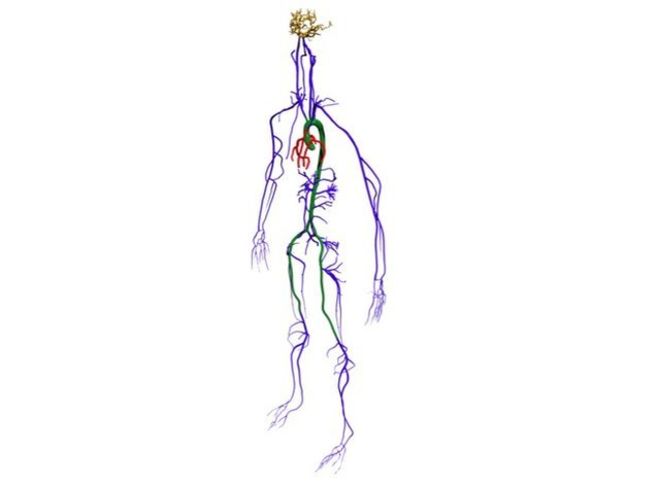Alumna Builds Detailed Circulatory Model

A computer simulation of blood flow through the body’s circulatory system could help hasten and improve cardiovascular disease treatments, a Department of Energy Computational Science Graduate Fellowship (DOE CSGF) alumna says.
Amanda Randles, now at Duke University, led the model’s creation and is first author of a paper detailing its results that was presented this month at a meeting of the American Physical Society. The model, which portrays every vessel of at least 1 millimeter in diameter, compares well with experiments, Randles says in a BBC News story.
The simulation was a runner-up for the 2015 ACM Gordon Bell Prize for outstanding achievement in high-performance computing, awarded in November at the SC15 supercomputing conference. A University of Texas at Austin team that included DOE CSGF alumnus Tobin Isaac won the award.
Randles’ model ran on nearly 1.6 million processor cores on Sequoia, an IBM Blue Gene/Q at Lawrence Livermore National Laboratory.
The three-dimensional simulation, which Randles and her colleagues named Harvey (after William Harvey, the 17th-century physician who discovered blood circulation), was built from full-body computerized tomography and magnetic resonance imaging scans of a single patient. It portrays blood vessels of at least a millimeter in diameter at a resolution of just 9 microns, or millionths of a meter.

To validate the simulation’s accuracy, it was compared with tests on a simulated aorta, the body’s largest blood vessel. The aorta was 3-D printed in plastic from body scans. Researchers tracked the movement of a blood-like fluid through the plastic vessel. Flow results from the computer model were strikingly similar.
Randles says the next step of including capillaries, the body’s smallest blood vessels, in the simulation will require far more powerful computers.
Randles was a DOE CSGF recipient from 2010 to 2013, when she earned her doctorate in applied physics from Harvard University.
Image caption: A visualization from a circulatory system simulation. Credit: Randles Lab, Duke University.


